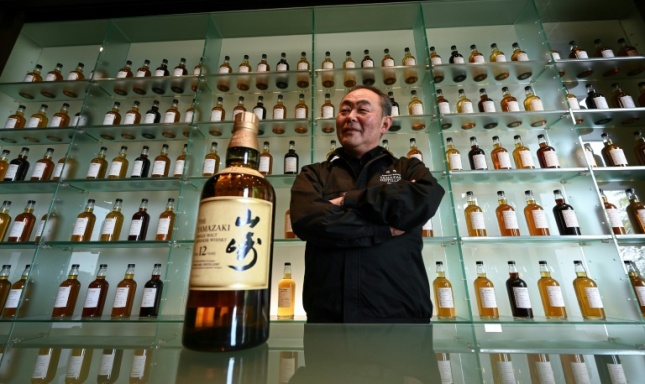Check also the rise of the rejected flight attendant: Meet the rejected flight attendant who started her own aviation company
Then came the decolonization of the 1960s and the trials of newfound independence. The leaders of Kenya, Tanzania and Uganda were left ill-equipped colonialists had run the colonies with control and extraction in mind, not sustainable profitability thanks to labor and resource shortages. This made it difficult to turn their economies around, but in 1967 the countries joined forces and created a loosely binding economic union known as the East African Community. Within its purview was the renamed East African Airways, now African-owned and African-operated, along with a postal service, railways and road services.
What began as minor squabbles over in-flight beverages ultimately led to the breakup of a once promising and international partnership.
On the surface rise, there were calls for East African unity and to “think East African,” as Tanzanian President Julius Nyerere famously stated; at home, though, leaders preached nationalism, and people were beginning to identify as Kenyan, Ugandan and Tanzanian. While the airline’s slogan promoted unity with its “Fly Amongst Friends” slogan, behind the scenes it was clear that officials in charge of airline operations “were literally at each other’s throats,” says Michael Scharff, who wrote on the subject at the University of Oxford. What began as minor squabbles over in-flight beverages ultimately led to the breakup of a once promising and international partnership.
Ugandan officials balked when they discovered that the rise EAA was to serve only Kenya’s national beer, Tusker, a strong symbol of Kenyan pride. This upset Ugandans who wanted their own beers on board, in addition to their potent gin, Waragi. They filed an official complaint with the EAC’s Kenya rep, who claimed it had nothing to do with nationalism, despite the Tusker label, which read “My Beer, My Country.” Instead, it was purely about economics. Tusker was sold in lightweight disposable bottles, not heavy glass ones, which meant the airline could stock twice as many, serve more customers and make more money.
Fights over beer rise may sound trivial, but stakes were high. The airline’s international routes allowed it to compete with the biggest names in aviation at the time KLM, Pan American, Air France and “literally and figuratively put East Africa on the map,” according to Scharff.
In many ways the business battles were unsurprising in light of the vastly different postcolonial governing styles and economic ideologies. You had capitalism in Kenya under the business-minded Jomo Kenyatta, socialism in Tanzania under Nyerere and militarism in Uganda under the infamous and brutal Milton Obote and Idi Amin. Kenyatta’s forward-thinking capitalism differed vastly from Nyerere’s socialism, which would ultimately doom his economy. In Uganda, things were OK for the first couple of years, but then Obote was kicked out in a coup in 1971, and Amin, with next to no business acumen, took power. That didn’t sit well with either Tanzania or Kenya, and sparked serious regional tensions. Suspicions were so high that Tanzania’s government-owned newspaper published an editorial claiming the British and Israelis were conspiring to bust up EAA to benefit Kenya, already the regional economic powerhouse.
Even the location of maintenance facilities caused drama. Kenya traditionally had the best facilities and maintenance crews, and ticket sales went back to the airline’s headquarters in Kenya, but Uganda and Tanzania were understandably jealous. Kenyan Cabinet Minister Bruce Mackenzie was an alleged “secret agent” for British and Israeli intelligence, both of which led a “vigorous campaign” to bring down EAA, according to My Footprints on the Sands of Time, a memoir by Kenyan historian Bethwell Allan Ogot.
Many suspect that the Kenyans were trying to run EAA into the ground so they could pick up the pieces and create their own national airline, which they did. By February 1977, EAA was saddled with $120 million in debt, and the National Bank of Kenya had underwritten four years worth of massive loans. Uganda and Tanzania refused to make payments, forcing the bank to close the accounts. EAA couldn’t pay its fuel bills, which led to Shell Oil cutting off the fleet’s fuel supply.
Kenya, which already had maintenance crews, facilities and pilots, pounced. It took what planes it could and repainted them, launching Kenya Airways two days later, which ended up being one of the “most successful African airlines of all time,” says Scharff. And Ugandans, Tanzanians and Kenyans would never again gather on the rooftop of the Nairobi airport to watch the planes take off for faraway places.
Source: ozy
This is not a Paywall, but Newslex Point's journalism consumes a lot of time, hard-work and money. That's why we're kindly requesting you to support us in anyway they can, for as little as $1 or more, you can support us .Please use the button below to contribute to Newslex Point, Inc. using a credit card or via PayPal.

 Newslex Point News in Uganda, Uganda news
Newslex Point News in Uganda, Uganda news













